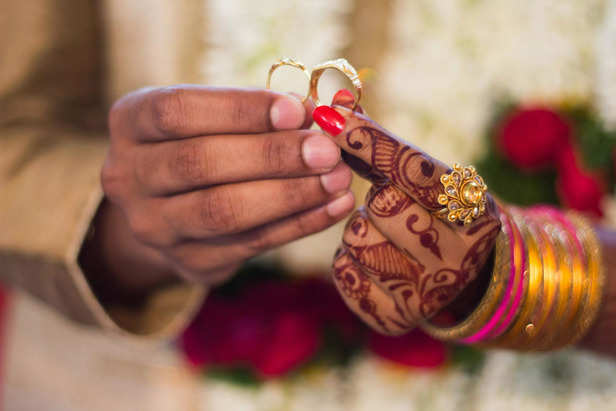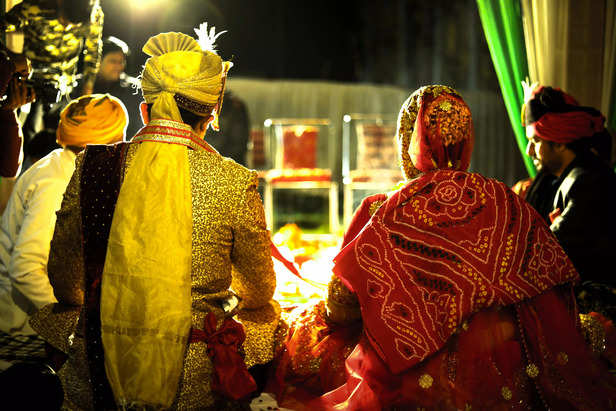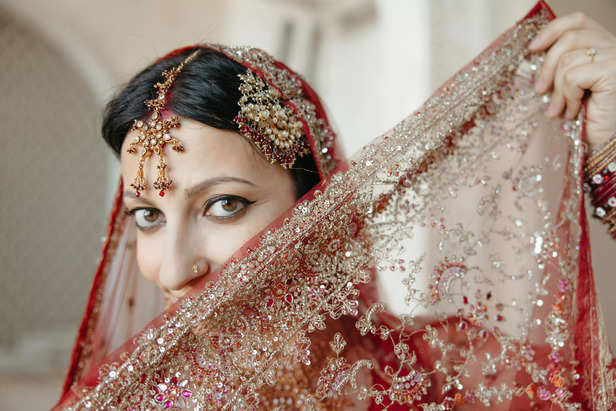The Great Indian Wedding Budget: How Much Is Too Much?
Riya Kumari | Feb 12, 2025, 23:56 IST
( Image credit : Timeslife )
You start with a budget. A reasonable, well-thought-out number. Something that makes sense. Then, somewhere between the hand-delivered gold-foil invitations and the seven-course welcome dinner for out-of-town guests, that number becomes a joke no one finds funny. Because in India, weddings don’t happen. They escalate. One minute, you’re talking about a charming, tasteful ceremony. The next, you’re debating whether imported Swiss orchids will match the napkin rings and why the DJ costs more than your annual salary. And the wildest part? Nobody bats an eye. It’s just how things are done.
There comes a moment in every Indian wedding—somewhere between the seventh buffet spread and the 12th outfit change—when you look around and think, How did we get here? Not just here as in this 5-star banquet hall with ceiling drapes that cost more than a year’s rent, but here as a culture, where weddings have turned into high-stakes performances. When did the promise of a lifelong partnership become a financial event that rivals corporate mergers? And at what point do we stop asking, “How much do we need?” and start asking, “How much is too much?”

Picture this: You’re scrolling through wedding reels, and there it is—a bride descending from the heavens (read: an overpriced hydraulic stage) while fireworks explode in the background. The comments? “So magical.” The reality? Someone just paid the equivalent of a small country’s GDP for a five-minute spectacle. See, somewhere between our grandparents’ “we had two witnesses and a borrowed saree” and today’s “destination weddings on a private island,” we lost the plot. Weddings have gone from meaningful rituals to big-budget productions with corporate-level event planning. You don’t just get married anymore—you launch a brand.
And we, as a society, have accepted that love must come with a price tag. But here’s the truth: most families don’t have the kind of money that modern weddings demand. They stretch, they borrow, they sacrifice. Middle-class parents spend their life savings on a 3-day event. Young couples start their new life with debt instead of security. All for what? The validation of relatives who will still find something to criticize? A fleeting moment of societal approval?

Indian weddings are like a Broadway show where half the audience was cast last-minute. Your parents, neighbors, and that one uncle who hasn’t spoken to your family in years all have VIP passes. Why? Because, in India, weddings aren’t just about the couple—they’re a battleground for social currency. You can’t just invite people you actually know. You must include:
1. Your dad’s second cousin’s boss, because politics.
2. That one family friend who will “get offended” if not invited.
3. 300 people you’ll never see again but will somehow judge your wedding for the next decade.
Somewhere along the way, weddings stopped being about the marriage and started being about the show. The bride and groom are no longer two people in love—they are the centerpiece of a spectacle, moving through carefully choreographed moments designed for the perfect reel, the most aesthetic photo album, the most viral wedding hashtag. The wedding is no longer for them—it is for the audience. And the problem with an audience is that it always wants more.
The “bare minimum” has been redefined. A simple wedding isn’t a choice anymore; it’s seen as a lack—lack of money, lack of status, lack of ambition. We’ve created a culture where restraint is frowned upon, where a couple who dares to have a small, meaningful wedding is questioned: “Bas itna hi?” (That’s it?) And yet, the irony is, after all the money is spent, what remains? A week later, no one remembers the imported orchids, the designer wedding favors, or the aerial drone shots of the pheras.
It’s easy to say, “Spend what you want, it’s your wedding.” But the problem is, it’s never just about one wedding. When one person raises the stakes, others feel pressured to match it. The standard keeps rising until what was once excessive becomes expected. Parents feel obligated to compete. Young couples feel the burden of outdoing their peers. People make financial decisions based on optics rather than logic. And before we know it, we’ve all agreed—without ever actually agreeing—that a wedding must cost an obscene amount to be considered a success. But a wedding isn’t success. A marriage is. And that’s where we need to shift the conversation.

You might think, “It’s just one outfit.” Oh, sweet summer child. It’s seven outfits, plus accessories, custom shoes, and a lehenga that costs more than a car. Because if the bride isn’t shining brighter than the chandelier, did she even get married? And let’s not forget the matching family ensembles. The groom’s uncle, the bride’s best friend’s cousin—everyone gets a color scheme because aesthetic matters, people. The wedding album is forever.
Look, no one’s saying you shouldn’t have a dream wedding. But when you’re spending the down payment of a house on floral décor that’ll wilt in 24 hours, maybe it’s time to ask: Is this for us or Instagram? Because here’s the truth—guests won’t remember the imported orchids, the embossed gold invitations, or the personalized monogrammed napkins. What they will remember is whether they had fun (and whether the food was actually hot).
1. The Price of Love

Wedding
( Image credit : Pexels )
Picture this: You’re scrolling through wedding reels, and there it is—a bride descending from the heavens (read: an overpriced hydraulic stage) while fireworks explode in the background. The comments? “So magical.” The reality? Someone just paid the equivalent of a small country’s GDP for a five-minute spectacle. See, somewhere between our grandparents’ “we had two witnesses and a borrowed saree” and today’s “destination weddings on a private island,” we lost the plot. Weddings have gone from meaningful rituals to big-budget productions with corporate-level event planning. You don’t just get married anymore—you launch a brand.
And we, as a society, have accepted that love must come with a price tag. But here’s the truth: most families don’t have the kind of money that modern weddings demand. They stretch, they borrow, they sacrifice. Middle-class parents spend their life savings on a 3-day event. Young couples start their new life with debt instead of security. All for what? The validation of relatives who will still find something to criticize? A fleeting moment of societal approval?
2. The Guest List: A Social Experiment

Shadi
( Image credit : Pexels )
Indian weddings are like a Broadway show where half the audience was cast last-minute. Your parents, neighbors, and that one uncle who hasn’t spoken to your family in years all have VIP passes. Why? Because, in India, weddings aren’t just about the couple—they’re a battleground for social currency. You can’t just invite people you actually know. You must include:
1. Your dad’s second cousin’s boss, because politics.
2. That one family friend who will “get offended” if not invited.
3. 300 people you’ll never see again but will somehow judge your wedding for the next decade.
3. A Celebration or a Performance?
The “bare minimum” has been redefined. A simple wedding isn’t a choice anymore; it’s seen as a lack—lack of money, lack of status, lack of ambition. We’ve created a culture where restraint is frowned upon, where a couple who dares to have a small, meaningful wedding is questioned: “Bas itna hi?” (That’s it?) And yet, the irony is, after all the money is spent, what remains? A week later, no one remembers the imported orchids, the designer wedding favors, or the aerial drone shots of the pheras.
4. The Cost of Trying to Impress the World
5. The Fashion Budget

Lehenga
( Image credit : Pexels )
You might think, “It’s just one outfit.” Oh, sweet summer child. It’s seven outfits, plus accessories, custom shoes, and a lehenga that costs more than a car. Because if the bride isn’t shining brighter than the chandelier, did she even get married? And let’s not forget the matching family ensembles. The groom’s uncle, the bride’s best friend’s cousin—everyone gets a color scheme because aesthetic matters, people. The wedding album is forever.
Look, no one’s saying you shouldn’t have a dream wedding. But when you’re spending the down payment of a house on floral décor that’ll wilt in 24 hours, maybe it’s time to ask: Is this for us or Instagram? Because here’s the truth—guests won’t remember the imported orchids, the embossed gold invitations, or the personalized monogrammed napkins. What they will remember is whether they had fun (and whether the food was actually hot).
